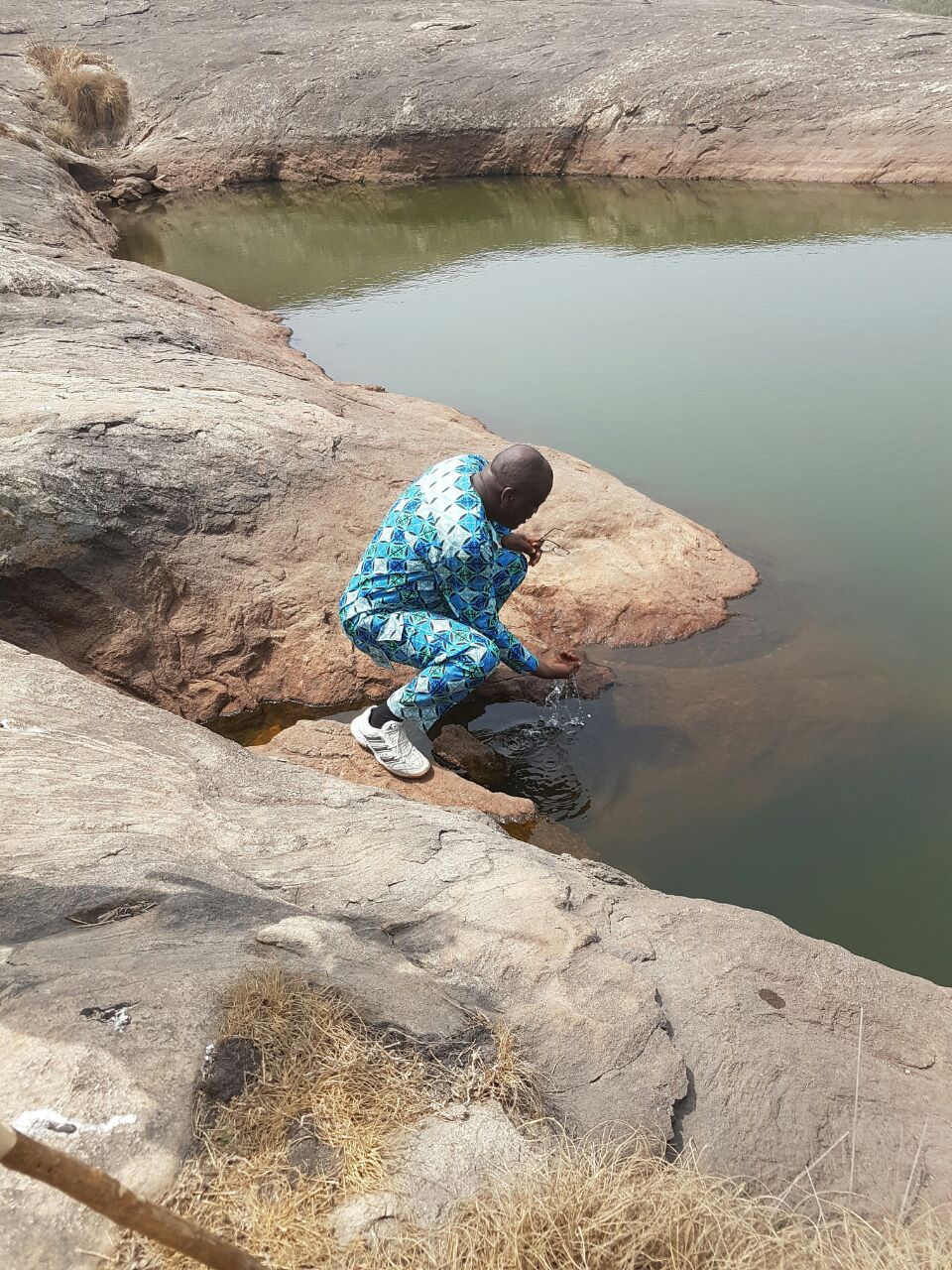BY ADEOLU AKANDE
There are only two suspended lakes in the world. The Hanging Lake in Colorado, United States of America and the Ado Awaye Suspended Lake in Oyo State, Nigeria. A suspended lake is a body of stagnant water on the mountains.
The Hanging Lake in Colorado is located at the Canyon, about 11 kilometres east of Glenwood springs. The Ado Awaye Suspended Lake is located in Ado Awaye, 20 kilometres out of Iseyin, headquarters of Iseyin Local Government in the Oke Ogun area of Oyo State. The fact that Ado Awaye is one of the only two Suspended Lakes in the whole world makes it an instant destination choice for tourists. The other suspended lake, Hanging Lake in Colorado attracts a minimum of 131,000 tourists per annum and the upsurge in the number of Artists in the three years preceding 2014 forced the American Forestry Authority to embark on multifarious strategies to reduce the number of tourists thronging the location. This is because the deluge of visitors had started to have negative impacts on the eco system of the Suspended Lake.
It is not so with the one in Ado Awaye. The lake remains only a potential tourist destination and source of revenue for the government and a potential driver for the economic development of the area in which it is located.
I visited the Lake in search of idle resources that could translate the economic potentials of Oyo State to reality. The lake is located on Iyake Mountains that sprawl around the sleepy town of Ado Awaye. The journey to the lake on the mountain top is not one for the faint hearted. A stair of 369 steps leads through a bush path to the plains on the mountain top. A litany of artefacts and earth shards are evidence of human habitation of the mountains in the past. It takes about one hour of rigorous climbing to get to the mountain top. Local accounts claim the mountains were homes to immigrant Awori dwellers that chose the mountain top as refuge from rampaging Dahomey Armies in the 19th century. They were the Ado people. As the account goes, when they relocated to the mountain foot after the wars, they met the inhabitants of Awaye. The two communities chose to live together hence the compound name of the town, Ado Awaye. The entire Yorubaland was a theatre of war in the 18th and 19th centuries as Yoruba kingdoms fought internecine wars of supremacy fuelled by search for war captives to sell into the international slave market. The Aworis today populate Lagos and Ogun States in Nigeria while the territories previously in Dahomey form part of present day Republic of Benin, some distance across the Nigerian borders from Ado Awaye. The first major tourist site on the mountains is the Shagi Rock, a spectacular rock formation. The locals believe it is home to a god that answers prayers. The advent of Christianity and Islam changed all that. But the edifice remains in the many dwellers of the town that bear the name of the god that supposedly live in the rock. Mostly in their 60s, these individuals were products of supplications made to the god of Shagi by women who went to the mountains to appease the god to bless them with the fruit of the womb.
Advertisement
Iyake Lake is the most prominent attraction on the mountains. It is a diameter shaped lake with clean turquoise colour water. No one knows the depth of the lake although local folktales claim some foreign tourists who attempted to establish its depth lost their lives in the process. Many folktales surround the lake. It is believed that the lake leads to another world. The lake is also credited with mysterious powers to solve personal and health problems. No wonder religious bodies throng the venue for prayers. Many visitors go away with bottles of the water which they believe contains medicinal properties and magical powers.
About two metres away from the lake is a spectacular hole which is called Agbomofunyake. It is a foot- like formation which accounts claimed was accessible to the Iyake Lake. Anyone who is pulled into the hollow formation ends up in the lake.
The elephant tree is a plant formation that is a replica of the face of the elephant. Tourists who are amused by the formation take turn to snap pictures with it. The formation has no mystical account of its formation. There are other attractions like the Iya Oniru Lake, located around the peak of the mountain. It never goes dry all through the year. There is the ese awon agba (footprints of elders), foot sized depressions which were believed to be footprints of the ancestors of the community and broken pieces potsherds that litter the mountains. – Archaeological evidence of human domicile on the mountains.
Advertisement
The Suspended Lake of Ado Awaye is one of the resources Oyo State could exploit to improve its revenue base, create jobs for its youths, attract foreign investors and create wealth for the local communities. There are many tourist attractions with such great potentials. These include the ancestral home of Bishop Ajayi Crowther, the tree he was tied to on capture as a slave boy still stands in Osoogu, the healing and fertility fish pond in Saki, cool and warm water spring in Oluyole Local Government in Ibadan, Captain Bower Tower in Ibadan, burial ground of the first, second and third Alaafin of Oyo and that of the only female Alaafin in Oyo Ile, site of the Ark of Jerusalem in Agelu beside Ado Awaye which hosts an estimated one million religion tourists annually, Oke Irifin Palace in Ibadan, the palace of the Alaafin of Oyo, the old Oyo National Park, the 300-year-old tortoise, baba agba, at the palace of Soun of Ogbomoso, the Aso Oke weaving stations in Iseyin, the different colourful masquerade festivals in the communities and monuments of great men who had etched their footprints in the sands of time like Chief Obafemi Awolowo, Chief Ladoke Akintola, Chief Adegoke Adelabu, Chief Bode Thomas and so on.
Harnessing the potentials of these cultural, historical, archaeological and religious tourism sites require a comprehensive planning of local festivals and enhancement of tourist sites. The influx of tourists will spur investors to establish hotels, restaurants and entertainment activities along the routes of tourist sites. The exposure of tourists to other economic potentials of the state will promote investment in other sectors and tourism will become a major driver of the development of Oyo State. Oyo State will not need to depend on federal allocation for her sustenance and development.
Akande is a visiting professor in the Department of Political Science and Public Administration, Igbinedion University, Okada, Edo state.
Advertisement
Views expressed by contributors are strictly personal and not of TheCable.
2 comments







Good write up sir. We really do not value our heritage.
your information was very useful. Thank you